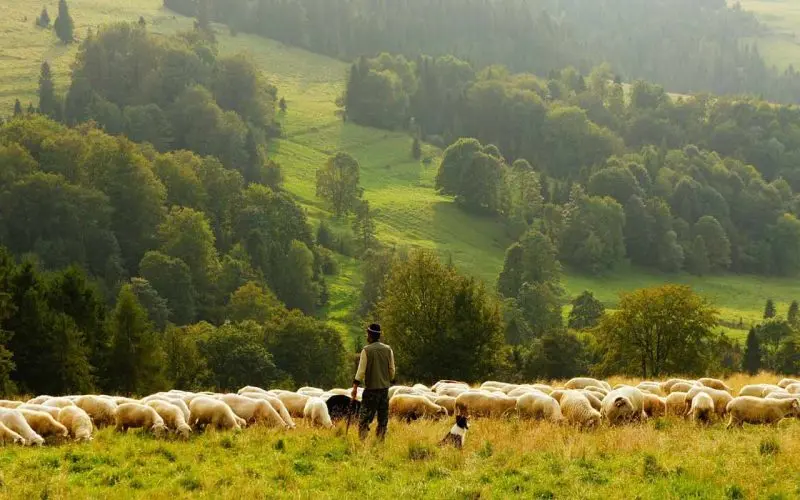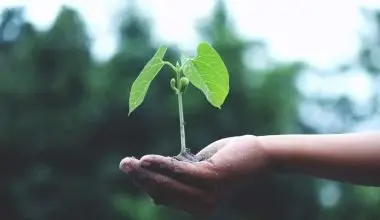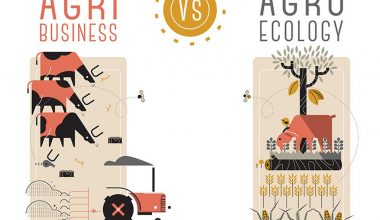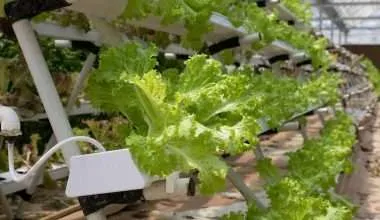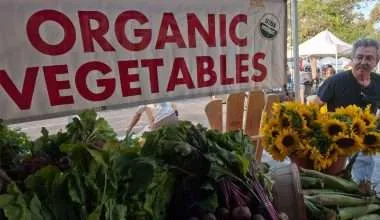Table of Contents Show
Take a walk or cycle to the countryside and you’ll see that there are farmers working all day and every day. They’ll be on those fields under the scorching sun in summers and coldest evenings of winters.
This is because that farm is their bread and butter. They work hard to keep it in the best state and they make that happen with sustainable farming practices.
While it is true that not every farm would be using sustainable techniques, research has often shown that farmers that have tried doing farming in unsustainable manners have suffered to its consequences of land degradation and damage to farm environment.
During these times of increasing populations and greater mouths to feed every year, we need farms to be sustainable so that the coming generations of our children and grandchildren can be fed too.
Navigation:
What is Sustainable Agriculture?
Basic Principles of Sustainable Agriculture
10 Sustainable Farming Practices
- Permaculture
- Biodynamic Farming
- Hydroponics and Aquaponics
- Urban agriculture
- Agroforestry
- Polycultures and crop rotation.
- Growth of heirloom and older varieties.
- Natural animal raising
- Natural pest management
- Ground covers, mulching, and Manual weed control
Benefits of Sustainable farming to Environment and Human Health
What is Sustainable Agriculture?
Sustainable Farming involves minimal use of chemicals (close to organic farming), conserves energy and water; also enhances production with organic materials resulting in minimal input and high yields.
A sustainably developed farm favors biodiversity as well as conserves local ecological environment.
Here’s a more concise definition:
Sustainable farming techniques basically produce food with the least amount of burden on Earth (environment) and its resources.
To establish that a farm is sustainable, it must have the following qualities:
Fulfill the needs of people: Provide good quality organic food to the farmers and their families along with other communities depending on it.
Profitable: The farm has to be profitable otherwise it won’t be able to fulfill other needs of the family and will quickly run out of business.
In harmony with nature: The farming practices should not be damaging to the environment and be sustainable. Such practices would also be promoting biodiversity of the local ecosystem.
For more details on principles, you should read the following basic principles of sustainable farming practices. You can also skip ahead.
Basic Principles of Sustainable Agriculture
Sustainable agriculture can be characterized by
- Increased Biodiversity
- Preservation
- Integration of Farming Processes.
Sustainable agriculture promotes biodiversity of plants and animals on farmlands. Both, plants and animals, on a sustainable farmland are interconnected to the point that sometimes you don’t need to do anything!
Look at it this way; fertile lands and animals have always worked in harmony to promote biodiversity and ensure sustainability. That’s basically the reason why we still have fertile farmlands.
One of the major benefits of sustainable farming is that a bio-diverse system is healthy and resistant against pests and diseases. Bio-diverse species are much more adaptive changes in climate and temperature than monoculture species.
They find ways to utilize nutrients efficiently and thereby prevent soil depletion.
A Part of produce from sustainable farming is actually planted to replenish agricultural land. Such plants include Soybean, Peanut and Clover which fix nitrogen into the soil. This helps to fill the soil with organic matter and improve nutritional cycles.
The sustainable farm works towards achieving a balance between using resources and allowing them to replenish themselves; all the while maintaining food supply.
10 sustainable farming methods and practices.
As I was discussing what sustainable agriculture means, it also came to me that I should tell you sustainable farming doesn’t necessarily mean organic agriculture.
There are many sustainable farming methods and practices that aren’t organic but are quite sustainable in the long term.
Before we delve into details; here’s a simple infographic on Sustainable Farming Methods.
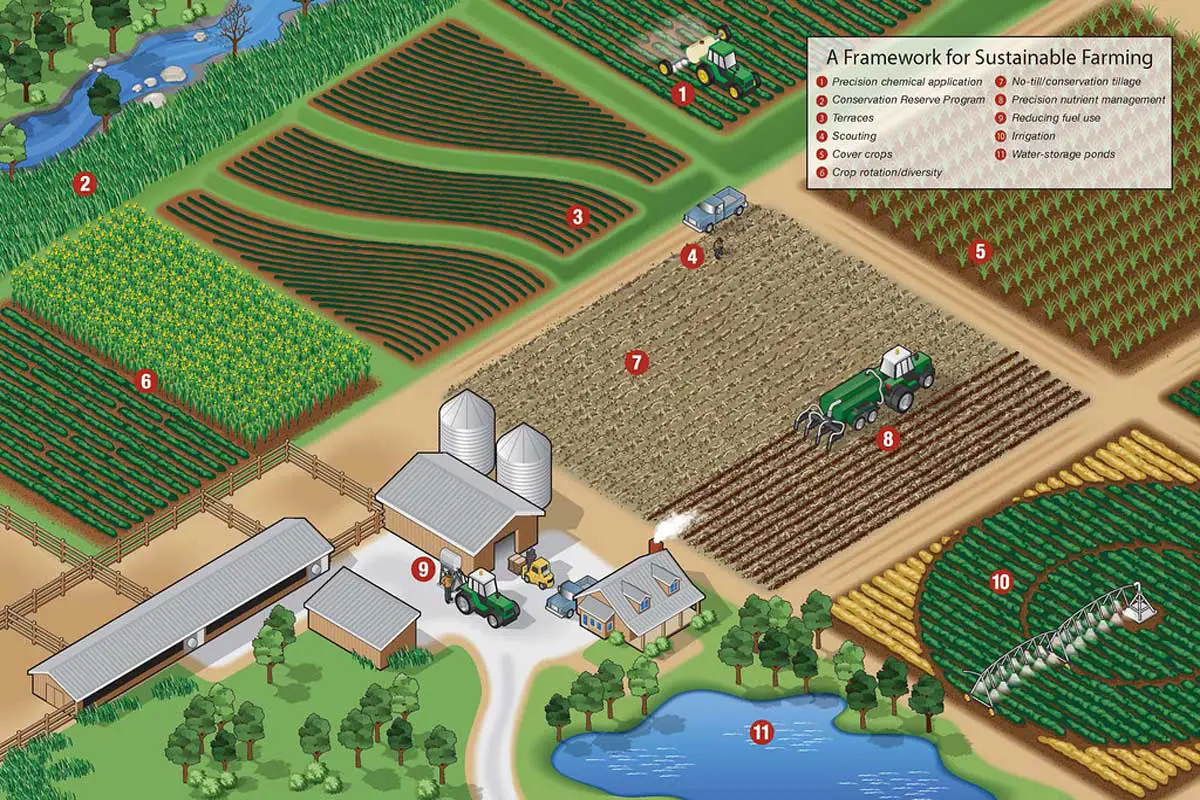
Now we can discuss each of those methods in more detail.
No.1. Permaculture
Permaculture is a system of using principles to design sustainable human communities. These principles ensure that humans are able to live in harmony with the plants and the surrounding ecosystems.
Permaculture principles can be applied in any field such as energy systems, home designs, water supplies, and agriculture and food production so that humans live in the most sustainable of ways.
So when applying permaculture principles to farming practices, it involves designing and implementing farming methods which lead to reduced waste and increased efficiency of farming operations.
Perennial vegetation, such as fruit trees or shrubs are planted and grown in an artificially designed system which completely mimics how plants would grow in a completely natural ecosystem, like rainforests.
There are 12 principles of permaculture one should know about.
- 1. Observe and Interact
- 2. Catch and Store Energy (Read on How to store Solar energy.)
- 3. Obtain a yield from the farm
- 4. Apply self-regulation checks and accept feedback gracefully.
- 5. Use and give value/preference to renewable resources and services.
- 6. Produce absolutely no waste, or at least minimal.
- 7. Designs should involve everything from the patterns to minimal details.
- 8. Integrate different resources rather than segregate them.
- 9. Make use of small and sustainable solutions no matter how slow they may be. Don’t lose patience!
- 10. Prefer biodiversity on your farm.
- 11. Use the edges and value the marginal bits, no matter how small.
- 12. Embrace changes and creatively respond to them for higher sustainability.
No.2. Biodynamic Farming
Biodynamic farming involves the farmers to think of their farm as one big living organism with many parts to it.
Before farmers acquired the land, many different species would intertwine and live in harmony with each other and helped each other survive.
Farmers are encouraged to do the same on their land, which is to raise animals on their land in such a way that these animals help improve soil fertility and quality of the land.
Biodynamic farming requires biodiversity. High levels of biodiversity among plants, animals as well as pollinating insects will lead to the building up of a very resilient eco-system that would be very sustainable in benefitting us as well as other living organisms on the farm.
Biodynamic farming saves you money. Biodynamic farming discourages the off-farm inputs (for improving soil fertility) like organic fertilizers but actually encourages the farmers to utilize on-farm inputs which includes applying manure from animals on the farm, composting as well as rotating complimentary crops to make the farm more sustainable.
Biodynamic farming also involves associating with the working of the cosmos. It advises to manage the plants, animals and soil according to the influence from cosmos in different sun and moon cycles.
Biodynamic farming is applied in vineyards, orchards, produce farms, gardens and many other forms of agriculture to make it more sustainable.
No.3. Hydroponics and Aquaponics (Farming without soil)
In this technique, plants are grown in water rather than soil. Special nutrients are added to the water to help the plants/crops grow.
In hydroponic systems, plants are grown with the roots immersed in mineral water solution or otherwise covered with inert material like gravel. These are perfect for indoor plants.
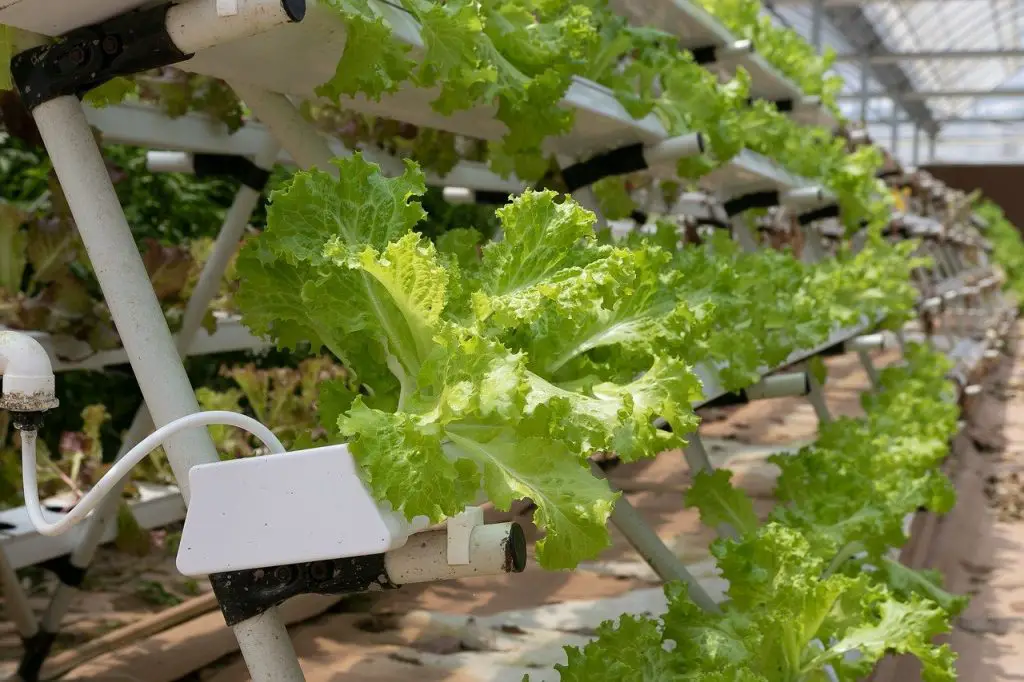
You can even practice Hydroponic farming at home! You can even get hydroponic farming system for your garden, just promise you’ll take care of it.
Aquaponics raises the bar by combining two things; Raising fishes and growing aquaponic plants.
In Aquaponic systems, the waste products of fish are used to nourish the plants. After the plants are nourished the water recycles back to the plants.
No.4. Urban agriculture
Considering overpopulation is one of the major environmental problems we face today, it’s only inevitable that the demand for food would increase.
A factor that usually accompanies overpopulation is urbanization which leads to lack of space. This has led to humans finding a source of food inside the city which does not require much space; hence, we have Urban Agriculture.
The raising prices of food, unavailability of organic food and the high carbon footprint due to transport of food from the farmer to consumers has led to the populations implementing new innovative methods to produce food near home which is known as Urban Agriculture.
These include growing food in backyard gardens, rooftop farms, building urban greenhouses to grow crops in the backyard and indoor hydroponic farms.
No.5. Agroforestry
Forests for Food or Food Forests?
Well, it’s surely food for thought!
Agroforestry means growing trees among other crops on the farmland. This combines the practice of agriculture and forestry for making a more diverse and sustainable farm.
Agroforestry systems make a small microclimate in the farm with very favorable temperatures and adequate soil humidity for the farmland. Not to mention, trees protect the farm from strong winds and heavy rains.
Trees also reduce the run-off from the farmland so the farms remain fertile and the rivers are toxic-free and there is minimum environmental damage.
In many cases, these trees turn out to be an additional income for the farmers as it can be a source of food and wood.
Sometimes these are favored to the point that farmers plant trees along all the empty spaces around the farm (fulfilling one of the principles of Permaculture – principle#11 above).
No.6. Polycultures and crop rotation.
To achieve the best yields, both of these techniques try to mimic the natural principles of farming.
The growing of multiple crop species in one area is Polyculture farming. These species act as compliments to each other and delivers greater diversity of products from one plot to another along with utilising all the available resources.
The high biodiversity helps the crops on the farm to be more resilient to weather fluctuations. It also promotes balanced diet and preserves the soil and its fertility.
Crop rotation involves the growth of different types of crops in the same area in rotations. The rotation which is planned would vary from a growing season to few years and for longer periods.
It is one of the most effective strategies to preserve soil fertility and to control agriculture properly.
The diversity of crops grown on the farmland in polycultures and the rotation of crops that are growing; can benefit the farmers by reducing the opportunity of pests and diseases to take hold of the crop.
This is mainly because their development cycles are interrupted by the changing of crops. The needs of applying fertilisers and pesticides are reduced by these practices.
No.7. Growth of heirloom and older varieties.
With increased industrialization of food systems, few varieties of plants are commercially grown. This situation occurred as the market demand has to be kept for viability of produce so the products can travel for long distances and can be stored for longer time periods (stay fresh longer).
Due to this, crops which can adapt to climate change, environmental diseases and pest conditions are neglected. They are not grown in numbers sufficient for continued existence.
In order to preserve the biodiversity of seeds, it is important that we grow heirloom and the older varieties of crops. Many of the neglected varieties of food plants might be lost to the world forever if the farmers and gardeners do not start growing older varieties of plants and heirloom.
We should support the farmers who continue growing these varieties for the betterment of the environment through buying and raising the demand for traditional varieties of produce.
Losing these traditional varieties could be as losing an important part of our ancestral heritage and an important source of genetic information. This is because these plants have contributed and adapted precisely to make the most out of our local conditions.
Our ancestors and our previous generations have spent significant time to select the best seed providing the most nutritious and flavored food. It is wasteful to let them go extinct as their quality is often supreme.
These varieties have contributed in where we are today and have nourished our ancestors. They should be preserved because they deserved it as their unique traits have helped us a lot to establish future climate resistant varieties which would nourish our children.
No.8. Natural animal raising
It is better for everyone to practice sustainable animal farming. It is not just good for the nutritional needs of humans and for the environment but it is also beneficial for the animals. Animals are under less stress when they are raised on the pasture and on preferred environment where they feel comfortable.
They can behave naturally and can have a fulfilling social interaction with other animals. They can even play around like the way they want to (as we often see them on countryside of town).
It is much healthier for the animals if they are allowed to gaze and live in pasture rather than being confined. It is very noticeable that these animals are cleaner, healthier and have that spark in their eyes.
Their happiness is reflected in the quality of the product that we get. Yellower eggs, better more nutritional meat and milk which is richer in vitamins and minerals.
Grasslands and animals evolve in a mutually-beneficial (symbiotic) relationship as these animals enrich the land in multiple ways.
The manure returns the nutrients back to the soil which completes the natural cycle. The grass lands provide food for the animals, making it a mutually symbiotic relationship.
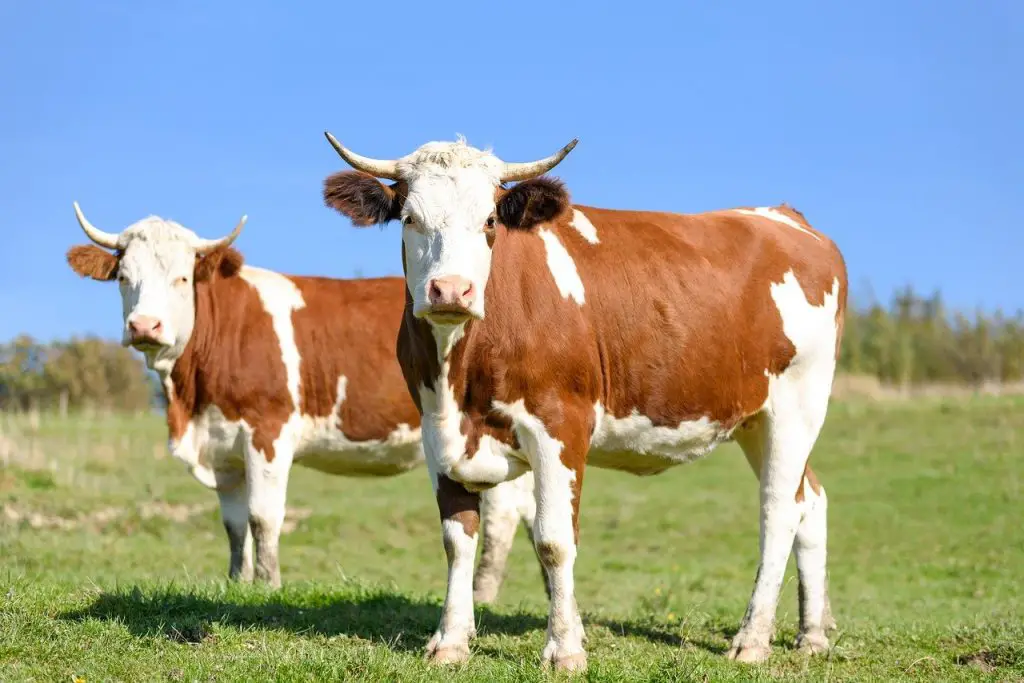
Grasses also grow their roots stronger this way because there is reduced overgrazing. This reduces the erosion and conserves the habitat of grasslands which hosts many other organisms.
No.9. Natural pest management
Out of many aims of sustainable agriculture practices, one of the major aims of such practice is to prevent the use of synthetic pesticides and other chemicals to suppress pest infestation and pathogens.
Applying chemicals to promote food growth is not a part of long-term solution and it is harmful to health of all organism; humans or otherwise. The sustainable farms look forward towards providing conditions to crops that discourage pest infestation.
This is achieved by strengthening natural resilience of crops and the practices which interrupt pest cycles (like crop rotation).
Crop rotation and greater diversity of crops are proven to be successful. This is successful as the preferred food sources of pests blend and possible camouflage in crops pests do not favor.
Therefore, the diverse pests are attracted by diverse crops and some of the crops are natural predators of these pests. This helps to keep pest population limited.
Farmers can also create a habitat for populations of beneficial insects and plants that protect the farm from harmful pests.
If you found natural pest management useful, you should definitely read Integrated Pest Management which farmers use to fight off pests without agricultural chemicals.
No.10. Ground covers, mulching, and manual weed control
By using ground covers and mulching, farmers can dramatically reduce the growth of weeds and conserve the soil moisture around the plants.
The natural suppressing of weed growth and such practices can reduce, or in some cases eliminate the need to apply herbicides to kill weeds. The stubborn weeds can also be controlled manually by plucking as their numbers reduce from time to time then.
This practice is widely applied on strawberry fields where the plants are grown with larger spaces in between them which sometimes gives opportunity for weeds to take over.
The protective material on the soil helps to keep the strawberries from rotting fast. While ripening, strawberries are not directly laid on the hard soil or else they may go bad.
Benefits of Sustainable farming to Environment and Human Health

When compared with the intensive farming practices done today, sustainable farming looks more to preserve the natural resources of the earth. The farming occurs in a manner which involves the natural recycling of water and nutrients, with very limited use of chemicals which is certainly less than the amount that damages the environment.
So here are a couple of factors that show how sustainable agriculture is good for the environment and human health.
1. Conserves water.
2. Reduced agricultural run-off to nearby rivers, leading to reduced cultural eutrophication.
3. Lakes and River Pollution is avoided with sustainable farming.
4. Recycling of nutrients naturally on the farm, which maintains soil fertility.
5. Promote maximum carbon sequestration by planting perennial vegetation and trees.
6. Enhanced energy efficiency in farming operations by utilizing water pumps and sprinkler systems that run on solar energy.
7. Reduced greenhouse gas emissions and air pollutants by minimal use of chemical insecticides and weed killers. An alternative would be to use organic weed killers and insecticides or employ Integrated pest management.
8. Takes care of farm animals and makes sure they are comfortable since they were the original source of natural fertilizers of the earth.
9. Pollinators such as bees ensure biodiversity and work towards the betterment of nature so it would make sense to provide them a good habitat.
10. Make sure to protect yourself so the bees don’t sting you god forbid. Allow them to come every once in a while so they help your backyard biodiversity.
11. Better Quality of life; Since sustainable farmers live in the vicinity of the farm; so if the environment is clean of air pollutants, it would increase the quality of life.
12. Better Food Quality; the most important benefit that should be shared with you is the quality of food. The food sourced from organic farming practices is very safe and has high nutritional value.
Scientists believe that many of the popular high yielding varieties used in intensive farming do not produce enough nutritional value in food. They believe the reason is that because the roots are weak they’re not able to absorb enough nutrients from the soil.
13. Reduced exposure of farmers to chemicals used in conventional and intensive agriculture practices. Food sourced from intensive agriculture (which is unsustainable) has been known to have high concentrations of chemicals.
14. High Biodiversity; Sustainable farmers often cultivate local varieties and do not particularly go after cash crops like wheat through monocropping. This is also the reason why we find so much biodiversity in such farms.
Also, before you think of how solar can live in harmony with these farms, you should read the Effects of solar on biodiversity of farms.
There are also many economic advantages of sustainable farming such as the employment opportunities to young individuals living in rural areas. This also goes a long way in improving the socio-economic conditions of the area.
These 14 advantages of sustainable farming and the fact that organic farms are more resilient to climate change because of heightened biodiversity are just some reasons they should be favored because our responsibility is to ensure food security for the future generations.
